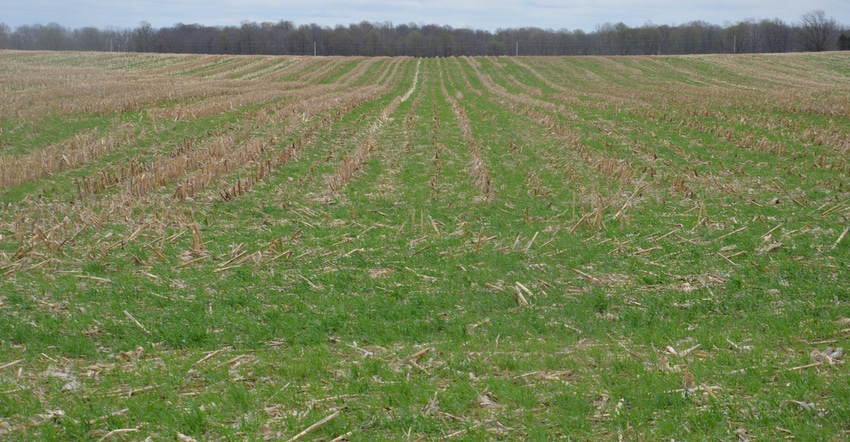November 29, 2021

Climate Smart Agriculture and Forestry is a new program from the Natural Resources Conservation Service. You must sign up at your local NRCS office by Dec. 17 to be considered for funding.
Adam Heichelbech, assistant state conservationist in charge of Farm Bill Programs, says Indiana NRCS is promoting several agricultural practices and selected forestry practices in the program.
The new initiative grew out of efforts to use agriculture in sequestering carbon, he adds. Since the same practices that sequester carbon also promote soil health and prevent soil erosion and nutrient runoff, he sees it as a win-win.
“It gives us an additional bucket of money to fund more conservation practices,” he says. Climate Smart Agriculture is part of the Environmental Quality Incentives Program. Applications that were submitted for regular EQIP projects will also be evaluated for funding after Dec. 17.
“We typically have more applications than we can fund,” Heichelbech says. “New funding gives us another tool to get conservation on the land.”
You can sign up for EQIP or continuous Conservation Reserve Program practices anytime.
“If you submit an application, that gives NRCS staff time to help you develop a conservation plan while waiting for funding,” Heichelbech says.
Ag practices
Climate Smart Agriculture funds will target the same practices on the agriculture side as conservationists already promote, Heichelbech says. “We’re talking about reduced tillage, no-till, cover crops, crop rotation and nutrient management,” he explains.
These practices sequester carbon, and they also reduce soil erosion, the NRCS specialist says. By incorporating cover crops, it’s easier to address soil health concerns and begin to improve soil health over time.
When a producer signs up for EQIP, it usually stretches over multiple years. Another tool, continuous CRP practices, are usually one-time commitments, such as installing filter strips, grass waterways or field borders. Continuous CRP usually offers rental payments for land in the practice, while EQIP does not include rental payments. EQIP provides cost-share to install or begin practices.
Agroforestry practices
Dan Shaver, the NRCS state forester, says several key practices will be targeted and encouraged as part of the Climate Smart Agriculture and Forestry program.
“Planting trees is an excellent way to sequester carbon and also protect the soil,” Shaver says.
Here is a closer look at possible agroforestry practices that could also be part of an EQIP plan:
Windbreaks and shelter breaks. These are more common in northern Indiana, where there are fewer trees and sometimes sandier soils subject to wind erosion and more wind.
“They also make sense where someone wants to shelter animals from the wind,” Shaver says. “We can also cost-share to repair and improve an existing windbreak.”
Silvopasture. This consists of adding trees to a pasture for shade — typically three to five trees per acre, often clumped together, the state forester says. The trees sequester more carbon and create shade at the same time.
Riparian forest buffers. Planting trees in flood plains is one of the most popular practices in agroforestry, Shaver says. In fact, state nurseries have a hard time keeping up with demand for seedlings.
“We can substitute other species, so there will be adequate supply,” he says. “People often plant trees in a long strip along a creek or stream, maybe 150 feet wide, for example.”
Tree and shrub establishment. If you want to include planting trees on some acres as part of your EQIP plan, this practice could provide cost-share funds, Shaver explains.
Comments? Email [email protected].
Read more about:
Carbon SequestrationYou May Also Like




